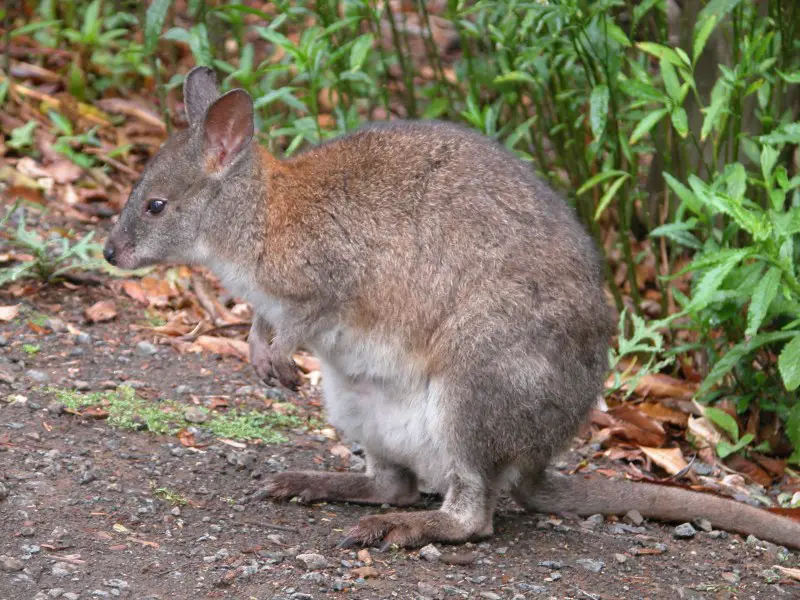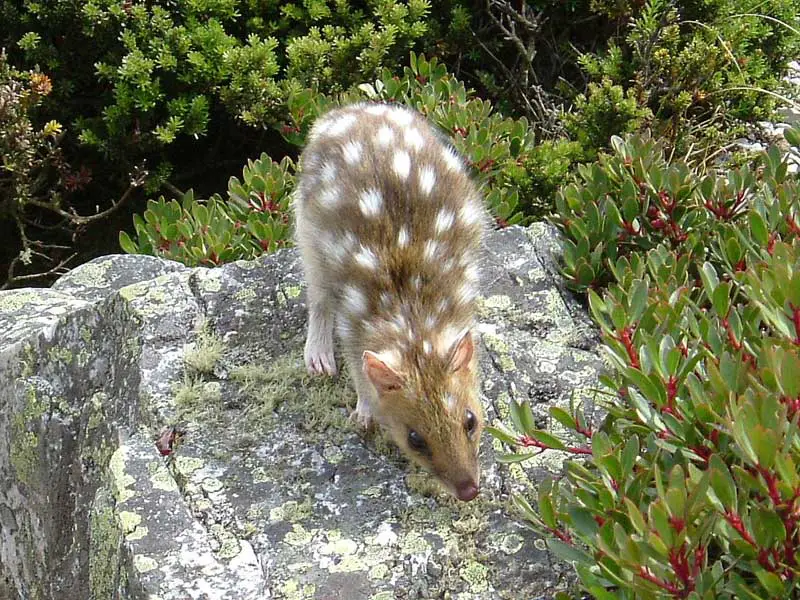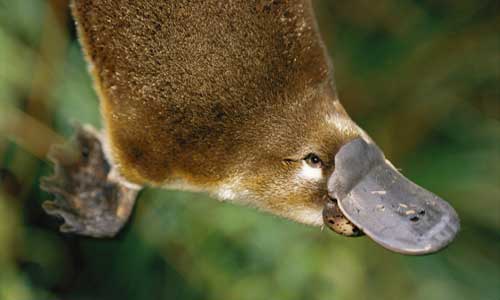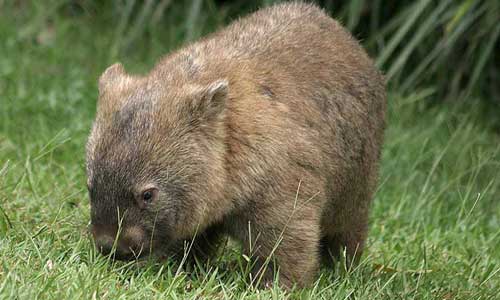Wildlife Encounters: Land
Tasmanian Devil
The Tasmanian devil was extirpated on the Australian mainland at least 3000 years ago, well before European settlement in 1788. Because they were seen as a threat to livestock in Tasmania, devils were hunted until 1941, when they became officially protected.
Close range viewing: Tasmanian Devil Park, Taranna; ZooDoo Wildlife Park, Richmond; Bonorong Park Wildlife Centre, Brighton; ZooDoo Wildlife Park, Richmond.
Wallaby
Wallabies can often been seen in bushland, farmland and beside roads throughout its habitat - the eastern coastlines of Australia, all of Queensland with the exception of western Cape York, New South Wales, and parts of Tasmania, most notably the north eastern portion. Most Australian zoos, wildlife parks and sanctuaries have kangaroos on display in enclosures..
Close range viewing: Bonorong Park Wildlife Centre, Brighton; ZooDoo Wildlife Park, Richmond.
Koala
Of all the animals that are unique to Australia, the koala and the kangaroo are at the top of the list of "must see" animals among overseas visitors. The koala can be found throughout the coastal regions of eastern and southern Australia, from near Adelaide to the southern part of Cape York Peninsula. All koalas in Tasmania are introduced, and reside in wildlife sanctuaries.
Close range viewing: Bonorong Park Wildlife Centre, Brighton; ZooDoo Wildlife Park, Richmond.

Echidna
Echidna can be found across Australia, their habitat includes forests, woodlands, shrublands and grasslands, rocky outcrops and agricultural lands. Echidnas are usually found among rocks, in hollow logs, under vegetation or piles of debris, under tree roots or sometimes in wombat or rabbit burrows.
Close range viewing: *Flinders Island; Bonorong Park Wildlife Centre, Brighton; ZooDoo Wildlife Park, Richmond.
Eastern Quoll
The Eastern Quoll (Dasyurus viverrinus), also known as the Eastern Native Cat, is a medium-sized carnivorous dasyurid marsupial native to Australia. They are now considered extinct on the mainland, but remain widespread and even locally common in Tasmania. It is one of six extant species of quoll. The Eastern Quoll is generally about the size of a small domestic cat. The Eastern Quoll is a solitary predator, hunting at night for its prey of insects and small mammals. They have also been known to scavenge food from the much larger Tasmanian Devil.
Close range viewing: Bonorong Park Wildlife Centre, Brighton ZooDoo Wildlife Park, Richmond.
Kangaroo
The eastern grey kangaroo can often been seen in bushland, farmland and beside roads throughout its habitat - the eastern coastlines of Australia, all of Queensland with the exception of western Cape York, New South Wales, and parts of Tasmania, most notably the north eastern portion. Most Australian zoos, wildlife parks and sanctuaries have kangaroos on display in enclosures.
Close range viewing: Bonorong Park Wildlife Centre, Brighton; ZooDoo Wildlife Park, Richmond.
Emu
Because emus are Australia's most well known bird, there wouldn't be too many zoos or wildlife parks around the country that don't have an emu or two running around an enclosure. Tame Emus in zoos can be quite inquisitive and have no fear in coming near humans for a closer look, and have bee known to take a sandwich or two from a picnic hamper if given half the chance. This behaviour can be quite scary, particularly for young children, so keep watch for them if entering an enclosure where emus are free to roam.
Close range viewing: Bonorong Park Wildlife Centre, Brighton; ZooDoo Wildlife Park, Richmond.

Pademelon
The Pademelons are small, compact, short-tailed wallabies that typically inhabit wet sclerophyll and rainforests from Tasmania to New Guinea. The Gondwana Rainforests of Australia World Heritage Area of northern NSW, particularly the McPherson Range bordering Queensland, are the best place to see them in the wild. Red-legged pademelons are a threatened species.
Close range viewing: ZooDoo Wildlife Park, Richmond.

Ringtail Possum
Like all ringtail possums, the common ringtail possum has a strongly prehensile tail which acts as a fifth limb, and which is carried tightly coiled when not being used. It can be distinguished from the brushtail by the light covering of fur on its tail, as well as the white tail tip. It is widespread throughout Tasmania, where it occurs in a variety of vegetation types, especially eucalypt forests and areas of tall, dense tea-tree.
Close range viewing: Bonorong Park Wildlife Centre, Brighton; ZooDoo Wildlife Park, Richmond.
Platypus
The Platypus is semi-aquatic, inhabiting small streams and rivers over an extensive range from the cold highlands of Tasmania and the Australian Alps to the tropical rainforests of coastal Queensland as far north as the base of the Cape York Peninsula. There are a number of viewing platforms for the observation of Platypuses in their natural habitat at a number of locations around the country.
Close range viewing: Platypus House, Beauty Point; Warrawee Reserve Landcare Platypus Tours, Latrobe
Hairy-Nosed Wombat
Southern hairy-nosed wombats inhabit the semi-arid and arid grasslands and woodlands in south-western New South Wales. Northern hairy-nosed wombats used to be abundant in New South Wales until the settlement of Europeans in the area, but have been rarely seen after 1872. Zoos and wildlife sanctuaries are the only places you are guaranteed to see a wonbat in Tasmania.
Close range viewing: Bonorong Park Wildlife Centre, Brighton; ZooDoo Wildlife Park, Richmond.









